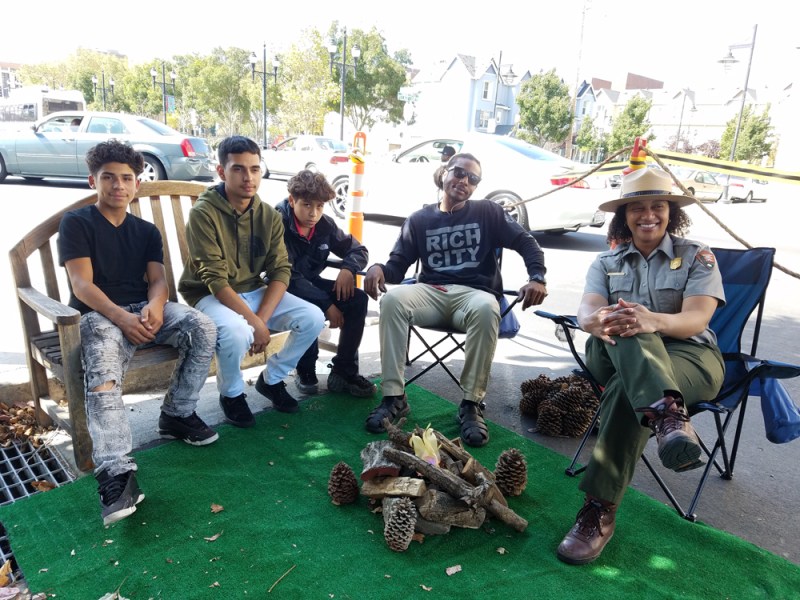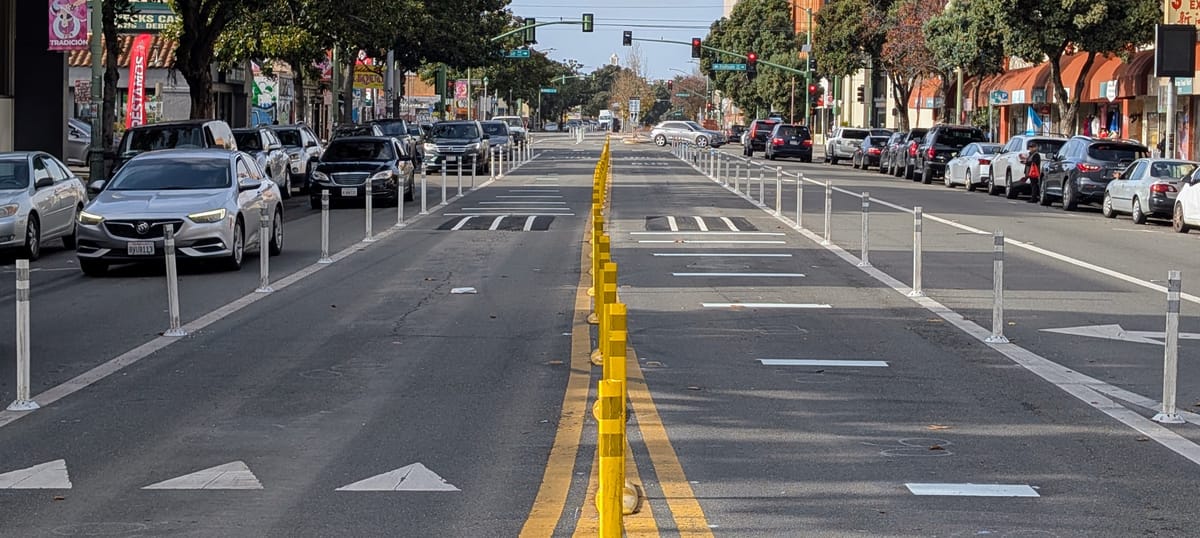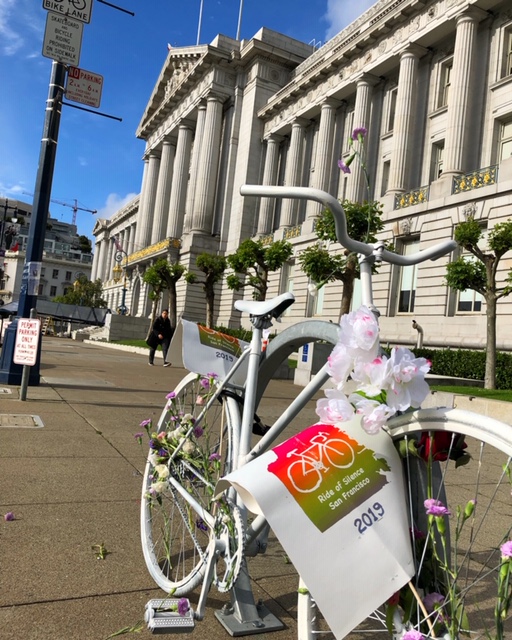The twelfth annual Park(ing) Day took place on Friday in cities around the country. Below are photos from California. Did we miss an event in your area? Let us know.
Park(ing) Day is a grass-roots event wherein people turn street parking spaces into something more useful and fun than car storage. It was started in 2005 in San Francisco by the design studio ReBar, and has since taken off worldwide, sparking conversations about the best and wisest use of street space.
In the Bay Area, many of the street parking spots that were turned into mini parks for two hours in the early years of the event—with park attendees paying rent for the spot by feeding the meters—have become permanent, officially sanctioned “parklets” with space for sitting, eating, and people watching between traffic and sidewalks. Some of those parklets hosted celebrations on Friday.
Walk Oakland Bike Oakland led a noontime bike tour of a number of permanent parklets in downtown. Oakland hosted a skateboard park in one spot, and a performance by Bandaloop far above the spectators at the Great Wall of Oakland.
SPUR hosted a parklet in front of their offices on Mission Street in downtown, set up in conjunction with the Jewish Community Center of San Francisco.
The city of Stockton hosted its first-ever Park(ing) Day. There, nine parking spaces in downtown were turned into coffee house lounges, grassy knolls, and art installations.
“For a lot of people, it’s very hard to visualize what a parklet looks like,” according to Kari McKnickle, program specialist with the San Joaquin Council of Governments. The council of governments, along with its Dibs commuting program, the San Joaquin Bike Coalition, and members of the Stockton community, created installations that challenge people to re-imagine parking spaces as public spaces.
Artists invited people to sit for portraits. Other spaces offered the use of a piano, a place to have a cup of coffee, and a chance to play with toy building blocks—as a way of offering feedback on potential transportation improvements in the region.
Christine Corrales, associate regional planner for SJCOG, said the Park(ing) Day event is a nicer way to connect with people than large public meetings, which “can be pretty intimidating to a lot of people.”
“Our goal is to create a community — an interactive downtown,” said Sylwia Qualls, communications manager at the Downtown Stockton Alliance.






